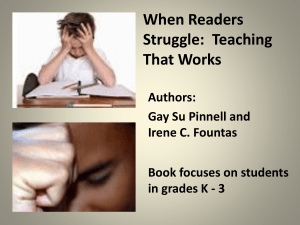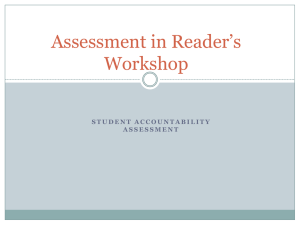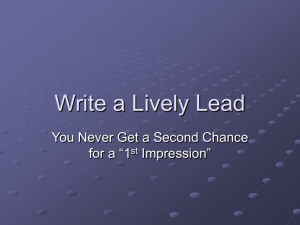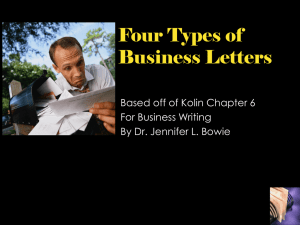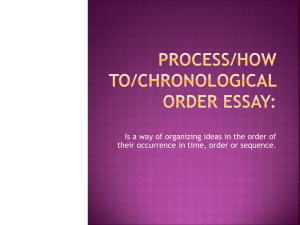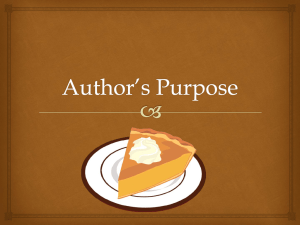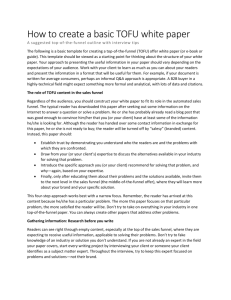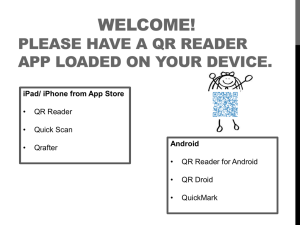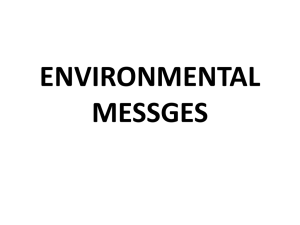5th Grade Literacy Night presentation powerpoint
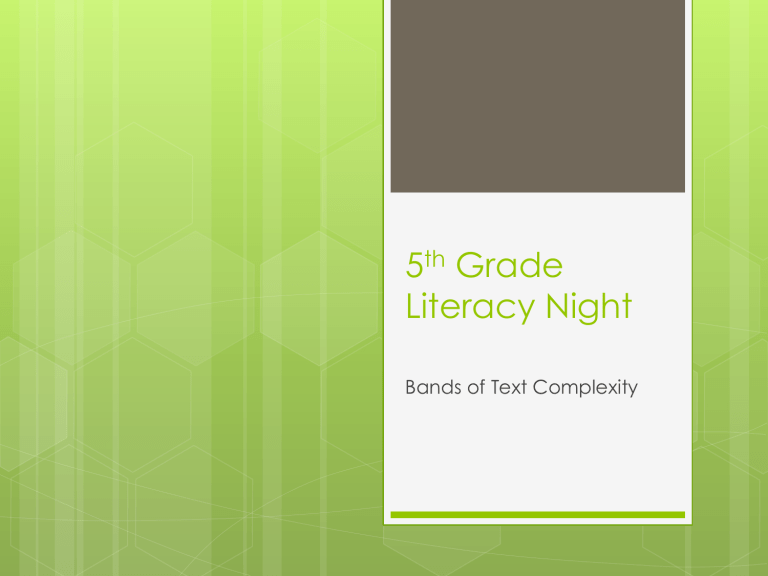
5
th
Grade
Literacy Night
Bands of Text Complexity
R, S, T Characteristics
Plots are issue or theme based, not just a character facing a problem
Several subplots or story lines that are connected to the main story line
Character traits are not explicitly stated
Characters are gray-good and bad-more than one way
Minor characters become important. Reader needs to pay attention to how the minor characters influence and teach the reader about the main character. Minor characters come and go for a reason.
Characters change based on other characters actions and reactions.
R, S, T (continued)
Setting plays an important role; can be considered a character-setting influences the characters
Reader needs to learn content
Tricky chunks, passages and chapters-sometimes require the reader to read on to figure it out
May be personification, humor, satire, exaggeration, or symbolism-including the title
Story line is not always linear-flashback and flash-forward
Questions to Ask R, S, T
Readers
Have I heard of this problem/issue before? What do I know about it already? What am I learning about the issue the character is facing? What does that make me think about this issue?
Are you meeting any new characters as you read?
Tell me about their relationship with the main character. How does this character influence, impact, change the main character?
Why did the author include this character?
How would you describe this character’s personality? How else?
How do you know? Is he/she always this way?
More Questions-R,S,T
How would you describe this character’s personality? How else? How do you know? Is he/she always this way?
Tell me about the setting. How does it impact the character or them problem/issue he/she is facing?
Why is the setting important in this book?
Have you noticed any repeating objects or ideas?
What are they? What do they mean? Why are they there? (symbolism)
U,V,W Characteristics
-Readers may encounter CHUNKS or WHOLE
CHAPTERS that are CONFUSING. It’s okay-read on and try to PUZZLE THROUGH your confusion.
-Readers must pay careful attention to SETTING (Time and place) and how it contributes to the MOOD.
Setting can reflect how a character is feeling.
-Characters are MUCH MORE COMPLEX
-say one thing and mean another
-act different ways in different settings
-act out of sync with your expectations
U, V, W (continued)
More sophisticated FIGURATIVE
LANGUAGE. Readers must pay attention to:
-titles and chapter titles
-metaphors
-idioms (i.e. Don’t count your chickens before they hatch)
U,V,W Continued
More than one plotline. They may not seem important at the time, but readers must hold onto them and think about how they
CONNECT as you read.
Structure Changes
Who is Narrating? Does it change?
Are there parallel stories that connect?
How is time passing?
Are ports of the story told in different ways
(journal entries, interviews)
Questions and Activities U,V,W,
Readers
Think about changing the phrasing from “Are you understanding what you read?” to “You’re reading a pretty sophisticated book…Has anything been confusing for you so far?”
“Tell me about the setting...Why did the author choose to describe the setting in this way? What mood does it create?”
Plot Map
How has your interpretation of the title changed throughout the book?
Do the chapter titles have any significance? What is it?
Why does the author choose to include ______? (journal entry, flashback, etc.)
Put the book down, jot some thoughts, come back to it later with a fresh outlook.
X, Y, Z Characteristics
Reader must notice and reflect on unusual story structures when present. Consider how the structure of the story goes with some o the big ideas the reader has and/or the character is having.
In fantasy and sci-fi especially and realistic fiction sometimes, reader must recognize characters that represent the struggle between good and evil as well as character archetypes.
Reader must use prior experiences, particularly prior reading experiences to think critically about themes in books.
X, Y, Z Continued
May contain archaic words or words with unusual or invented connotations.
Contains irony and satire and reader must recognize this and make sense of it.
Text addresses multiple themes that the reader must interpret.
Questions to Ask X, Y, Z
Readers
What themes do you see in this text so far?
How are the themes evolving across the text?
How are the themes in this text like or unlike those in other books you have read?
How does the author develop this theme?
How does this compare to how ____ author of ____ book developed the same theme?
More Questions for X, Y, Z
When the author wrote ____ (irony, satire), what do you think he/she meant or was trying to show? Why did he/she write it this way?
How does the author structure this story? Why do you think he/she made this choice?
How does this structure go with the ideas you are having?
With those of the character?
Have you encountered any unusual words or phrases?
What do you think they mean? Why do you think the author chose to say it that way rather than another way?
Q & A
Thank you for coming
.
